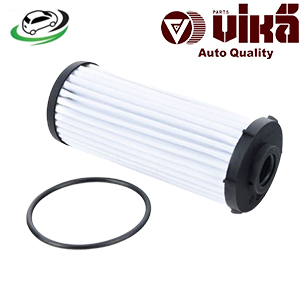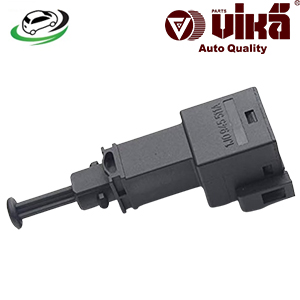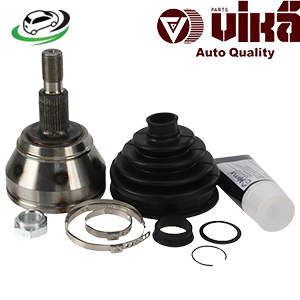-14%
Get Outer CV Joint Audi TT/TT Quattro / Volkswagen Beetle/Golf/Jetta 1J0498099E
The outer Constant Velocity (CV) joint is a crucial component in front-wheel-drive and all-wheel-drive vehicles. It plays a vital role in transmitting power from the transmission to the wheels while accommodating the suspension movement. This comprehensive guide covers the function, design, common issues, and maintenance of the outer CV joint.
1. Purpose and Function of the Outer CV Joint
The outer CV joint, often referred to as the outer constant velocity joint, is responsible for transmitting torque from the vehicle’s transmission or differential to the wheels. It allows for the smooth transfer of power while accommodating the up-and-down movement of the suspension and the turning of the wheels.
1.1. Torque Transfer
- Power Transmission: The outer CV joint transmits engine power to the wheels, enabling the vehicle to move. It ensures that the power is delivered smoothly, even when the wheels are turned or the suspension is compressed or extended.
- Consistent Speed: Unlike traditional universal joints, CV joints maintain a constant rotational speed without causing vibrations or jerks. This is crucial for smooth acceleration and stable handling.
1.2. Accommodating Suspension Movement
- Suspension Articulation: The outer CV joint allows for the vertical movement of the suspension system. It accommodates changes in wheel position caused by road irregularities, bumps, and turns.
- Steering Angles: When the vehicle turns, the outer CV joint adjusts to the changing angles of the wheels, ensuring that power is delivered evenly to the wheels and preventing binding or excessive stress.
2. Design and Structure of the Outer CV Joint
The outer CV joint is designed to handle high torque and varying angles while providing smooth power transfer. It consists of several key components:
2.1. CV Joint Types
- Tripod Joint: Commonly used in the outer position, the tripod joint consists of three small, cylindrical bearings housed in a tripod-like structure. It allows for smooth power transfer and accommodates suspension movement.
- Ball-Type Joint: Another common design is the ball-type CV joint, which uses a set of ball bearings housed within a spherical race. This type allows for a higher range of motion and is often used in high-performance applications.
2.2. Key Components
- Outer Housing: The outer housing encloses the CV joint’s internal components and is attached to the wheel hub. It provides structural support and protection for the joint.
- Inner Housing: The inner housing, or the CV joint cup, connects to the axle shaft and provides a mounting point for the joint’s internal components.
- CV Joint Bearings: The bearings are the rolling elements within the joint that facilitate smooth movement and power transfer. They are usually made from hardened steel to withstand high loads and wear.
- Boots: The CV joint is enclosed by rubber or plastic boots that protect it from dirt, debris, and moisture. The boots also contain the grease needed for lubrication. They are typically secured with clamps to prevent the grease from leaking out.
3. Common Issues with the Outer CV Joint
The outer CV joint is subject to wear and tear due to its constant movement and exposure to road conditions. Common issues include:
3.1. Boot Damage
- Tears and Cracks: The CV joint boot can become damaged from road debris, heat, or aging. Tears and cracks in the boot allow dirt and moisture to enter the joint, leading to contamination and accelerated wear.
- Grease Leakage: Damage to the boot can also result in the loss of grease, which is essential for proper lubrication and smooth operation. Without adequate lubrication, the CV joint can overheat and fail.
3.2. Wear and Tear
- Ball Bearing Wear: Over time, the ball bearings or other internal components of the CV joint can wear out due to constant use and stress. Worn bearings can cause clicking or popping noises, especially during turns.
- Joint Binding: A worn CV joint may experience binding or resistance during movement, which can cause vibrations or irregularities in power transfer. This can affect the vehicle’s handling and comfort.
3.3. Noise and Vibration
- Clicking Sounds: One of the most common signs of a failing outer CV joint is a clicking or popping noise when turning. This noise indicates that the internal components are worn or damaged.
- Vibrations: Excessive vibrations during acceleration or driving can be a sign of a damaged CV joint. These vibrations are often felt through the steering wheel or the floorboard.
4. Maintenance and Replacement
Regular maintenance and timely replacement of the outer CV joint are essential for ensuring the longevity and performance of the vehicle.
4.1. Regular Inspection
- Boot Condition: Regularly inspect the CV joint boots for signs of damage or deterioration. Check for tears, cracks, or grease leakage. Replacing a damaged boot early can prevent further damage to the joint.
- Noise and Vibration: Pay attention to any unusual noises or vibrations during driving. Early detection of symptoms can help prevent more severe damage and costly repairs.
4.2. Replacement Procedure
- Replacing the CV Joint: If the outer CV joint is found to be damaged or worn, it should be replaced. This typically involves removing the wheel, axle, and CV joint assembly. The new joint is then installed and secured.
- Boot Replacement: If only the boot is damaged, it may be possible to replace the boot and repack the CV joint with grease. This repair is generally less expensive than replacing the entire joint.
4.3. Professional Service
- Consult a Mechanic: For complex repairs or if you are unsure about the condition of the CV joint, it is advisable to consult a professional mechanic. They can perform a thorough inspection, diagnose any issues, and recommend the appropriate repairs or replacements.
5. The Importance of the Outer CV Joint
The outer CV joint plays a crucial role in the vehicle’s drivetrain system. Its proper functioning is essential for:
5.1. Smooth Operation
- Power Transfer: The CV joint ensures smooth and consistent power transfer from the transmission to the wheels, contributing to a smooth driving experience.
- Handling and Stability: By accommodating suspension movement and steering angles, the CV joint helps maintain vehicle stability and handling, especially during turns and uneven road conditions.
5.2. Vehicle Longevity
- Preventing Damage: Regular maintenance and timely replacement of the CV joint help prevent damage to other drivetrain components, such as the axle shaft and differential.
- Reducing Repair Costs: Addressing CV joint issues early can prevent more severe problems and costly repairs, contributing to overall vehicle longevity and reliability.
6. Advances in CV Joint Technology
Modern vehicles often incorporate advanced technologies and designs to improve the performance and durability of CV joints:
6.1. Improved Materials
- High-Strength Alloys: Advanced CV joints use high-strength materials and alloys to improve durability and resistance to wear. These materials can handle higher torque and stress levels.
- Enhanced Lubricants: Modern CV joints utilize advanced lubricants that offer better protection and longer service intervals.
6.2. Design Innovations
- Enhanced Boot Designs: New boot designs offer better protection against dirt, debris, and moisture, extending the lifespan of the CV joint.
- Sealed Joints: Some CV joints come with sealed designs that eliminate the need for external lubrication and reduce maintenance requirements.
Follow us on Facebook for more parts.



